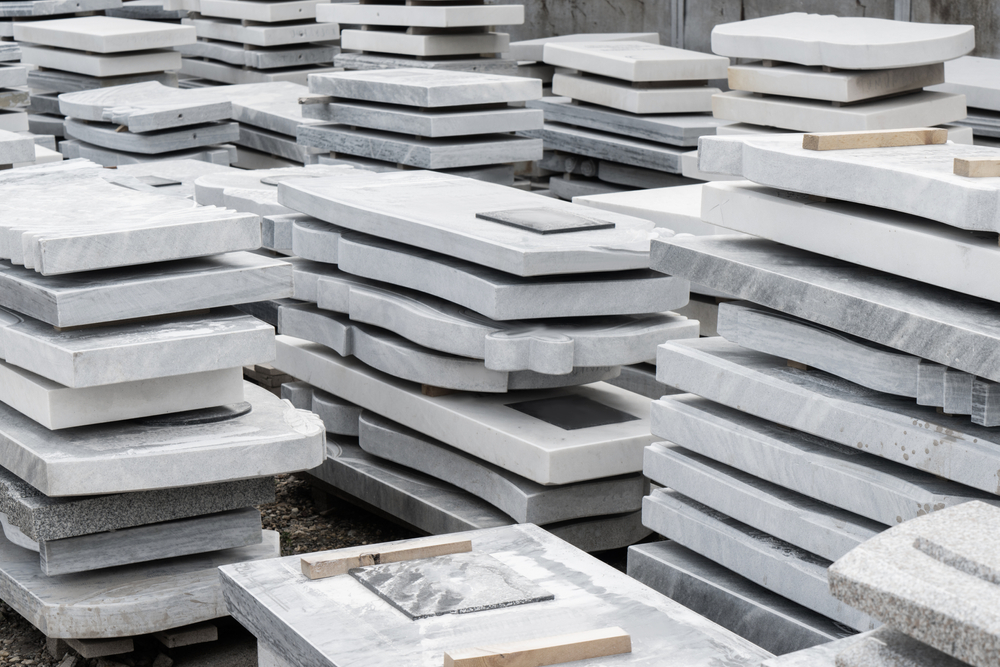
For thousands of years, memorial headstones have been a way for people to honor their loved ones who have passed. In ancient times, stone grave markers were reserved only for the wealthy. These markers took hundreds of people to cut, move, and engrave the rock required for these monuments, making them a luxury only available to a few people.
As time went on, headstones became more accessible. Machinery was invented that helped to cut and move large quantities of stone, making it possible to obtain these markers at a cheaper cost. The result was that more and more people began using stone head markers or tombstones.
The stones used to mark graves thousands of years ago are still around today, and many people enjoy the comfort of knowing that they and their loved ones will be remembered for many years. There are a lot of people, however, who have wondered how headstones are made today.
It Starts at a Quarry
The vast majority of headstones today are made from granite. This material is relatively easy to find and relatively easy to move and cut. It's also extremely durable; granite can withstand hurricanes, floods, and centuries of adverse weather conditions. Granite typically comes from a rock quarry where stone blocks are cut from the bedrock, typically by drilling.
A pneumatic drill bores vertical holes in the rock to cut the stone out of the bedrock. The holes are usually about 20 feet deep. This enables the miners to remove granite blocks about three feet wide, three feet high, and 10 feet long. Each of these stone segments will weigh about 20,250 pounds. After the granite block is cut loose, the block is placed on top of a flatbed truck via a wench and transported to a granite manufacturer.
Upon arriving at an industrial stonecutter or granite manufacturer, these giant granite slabs are cut into smaller slabs. Specifically, the rock is cut with a diamond rotary saw. Depending on the orders that need to be filled, slabs are cut between six to 12 inches thick.
Polishing
After the slab is cut, each piece is polished. Each slab is passed under several rotating heads with differing grit levels to accomplish this. The first few polishing heads have a rough or "harsh" diamond grit designed to remove large imperfections from the stone. The middle heads are for honing the stone. Finally, the last few heads are equipped with felt buffer pads that will give the stone some shine. These final pads have a combination of water and aluminum or tin oxide powder to polish the stone to this glossy finish.
Once polished, the headstone is ready for the finishing stage. The polished granite slabs are cut into the desired shape and size based on the customer's order. Depending on the facility, this can be done with industrial diamond blades or via a technique known as rock pitching. This technique involves chiseling the outer edges of the stone by hand, allowing the stone mason to give the headstone a more defined or unique shape. Once completely cut, the monument is crated to avoid damage and shipped to the monument builder.
Once the headstone arrives at the monument builder (sometimes referred to as the stone mason), it will be transformed into the headstone the customer wants. While the stone mason was waiting for the stone to be cut and shipped, they were already working with the customer to design the tombstone. Paper or computer-based drawings of the monument will be created, allowing the customer to visualize exactly what the monument will look like before the stone mason begins carving. This allows the customer to make revisions and approve the final design without cutting and discarding multiple stones.
Creating the Final Product
After the customer has approved the design or layout for the headstone or memorial marker, the engravers will use the computer-generated design and artwork to form a stencil. The stencil is used as a guide to engrave information such as words, dates, art, or symbols into the granite surface.
In the past, this work was done entirely by hand, but today many stone masons use computer guidance to create precisely what the customer has envisioned. Using computers allows for a greater level of detail, and it has opened the door to many different possibilities regarding headstone designs. Customers can now add artwork, portraits, and other effects to their headstones that weren't possible in previous years.
The engraver will use a high-pressure air hose to trace the design from the stencil onto the granite headstone. Once the design is carved from the stencil, the engravers can fill in the crevasses with black or white litho, allowing the lettering to stand out against the natural coloring of the stone. The uncut portion of the stencil is then removed, and the granite headstone is ready to be shipped to the cemetery.
It is important to realize that this process takes time. Cutting the stone at the quarry and having it shipped can take several weeks. While some stone cutters have granite slabs pre-made and waiting for orders, customers looking for a specific piece or style of granite will need to be prepared to wait. The design process can take as little as an hour or several months, but once a design is fully approved, creating the headstone can take anywhere from a day for an extremely simple marker to several weeks for a complicated marker.
It often takes several months for a headstone to be ready for placement after an order is placed.

